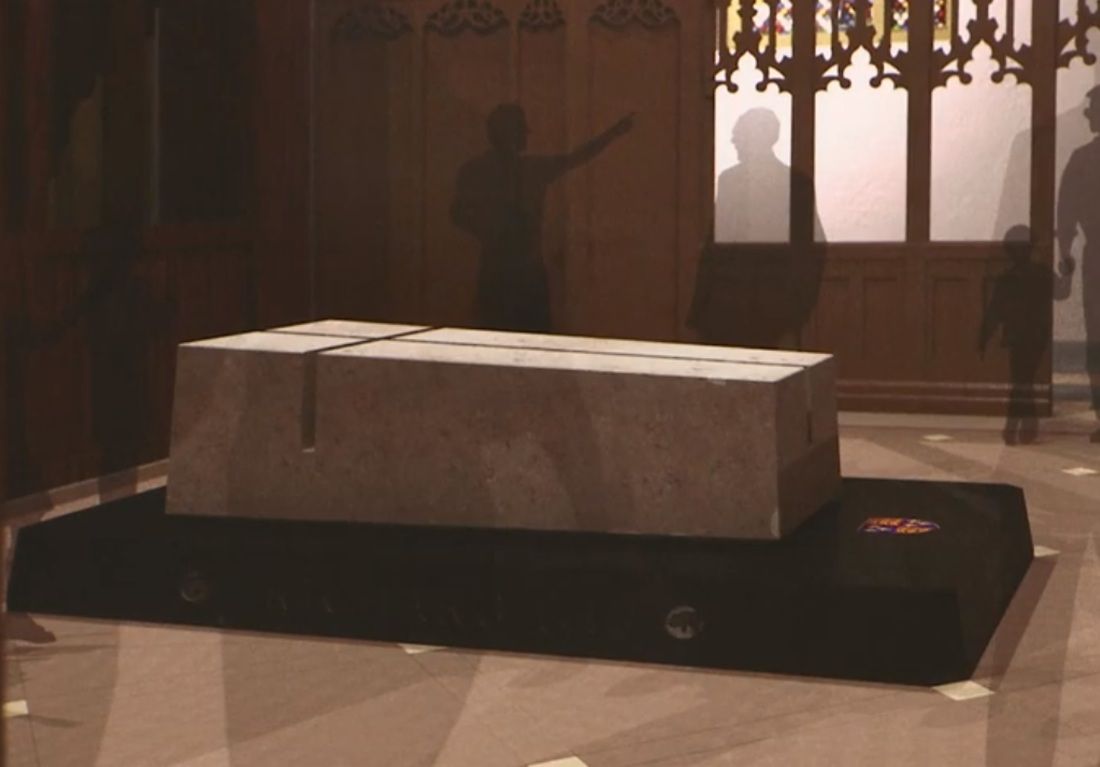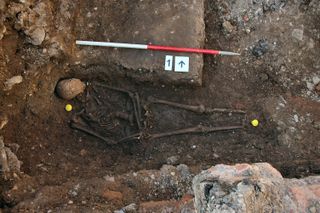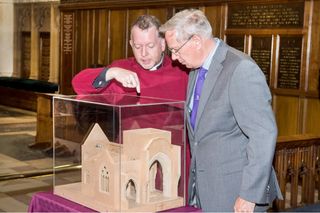All Hail King Richard! Details of Elaborate Burial Unveiled

After years of heated controversy over the rightful resting spot for King Richard III, officials have finally decided on the reinterment details for the remains of the 15th-century English ruler.
His remains will be laid to rest on Thursday, March 26, 2015, in Leicester Cathedral during one of three services to honor the English king, the University of Leicester announced yesterday (Aug. 7).
The king's remains, which were discovered beneath a city council parking lot in Leicester, England, in 2012, will be tucked away in a tomb made of Swaledale fossil stone crafted by Michael Ibsen, a descendant of King Richard III's sister Anne of York. That design was unveiled on June 16.
A judicial review concluded on May 23 that the University of Leicester had the legal right to reinter Richard III's remains, after controversy erupted by Richard enthusiasts, including the Plantagenet Alliance, who claimed the king should be reburied in York, England, where he spent a good chunk of his life.

King Richard ruled England from 1483 to 1485, when he died at the Battle of Bosworth, the final battle in the War of the Roses, the civil war between the Houses of York and Lancaster. The king's body was buried in a hastily dug grave three days later, according to historical records and research published last May in the journal Antiquity. Once the remains were discovered, they underwent extensive study that included a look at the skeleton's physical characteristics and its DNA. After confirming the identity of the bones, researchers and others involved began to discuss the reburial. [Gallery: The Search for Richard III in Photos]
"Our cathedral has been consistently committed to providing a fitting, dignified and memorable ceremony for the reinterment of King Richard," Rt. Rev. Tim Stevens, Bishop of Leicester, said in a statement. "We can now see how this works out in detail, and our city and county look forward to all the events of next spring."

The reburial will include much fanfare. On March 22, the university will place the king's remains into a lead-lined coffin, which will then be transferred from Leicester to Bosworth, as the villages linked in some way to Richard III's last days before his death in 1485 will be honored. The coffin will return to Leicester that evening, arriving at the Leicester Cathedral, where they'll be handed over to the church during a service.
Sign up for the Live Science daily newsletter now
Get the world’s most fascinating discoveries delivered straight to your inbox.
King Richard III's remains will lie in repose for three days, during which time the public can pay their respects. The first service, on March 26, will be followed by similar events on March 27 and 28.
This week, contractor Fairhurst Ward Abbotts has begun to make space for the king's tomb.
According to the design released in June, the king's remains will lie inside a lead ossuary placed inside an English-oak coffin — all of which will be placed inside a brick-lined vault in the cathedral floor and be enclosed in a stone tomb. The tomb will reside on a slab of dark Kilkenny marble inscribed with the king's name, dates, motto and coat of arms.
The tomb and reinterment is estimated to cost 2.5 million pounds ($4.2 million), according to the Very Rev. David Monteith of the Leicester Cathedral.
Follow Jeanna Bryner on Twitter and Google+. Follow us @livescience, Facebook & Google+. Original article on Live Science.
Jeanna Bryner is managing editor of Scientific American. Previously she was editor in chief of Live Science and, prior to that, an editor at Scholastic's Science World magazine. Bryner has an English degree from Salisbury University, a master's degree in biogeochemistry and environmental sciences from the University of Maryland and a graduate science journalism degree from New York University. She has worked as a biologist in Florida, where she monitored wetlands and did field surveys for endangered species, including the gorgeous Florida Scrub Jay. She also received an ocean sciences journalism fellowship from the Woods Hole Oceanographic Institution. She is a firm believer that science is for everyone and that just about everything can be viewed through the lens of science.












